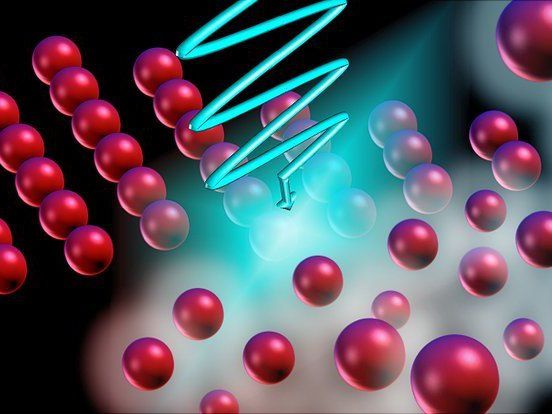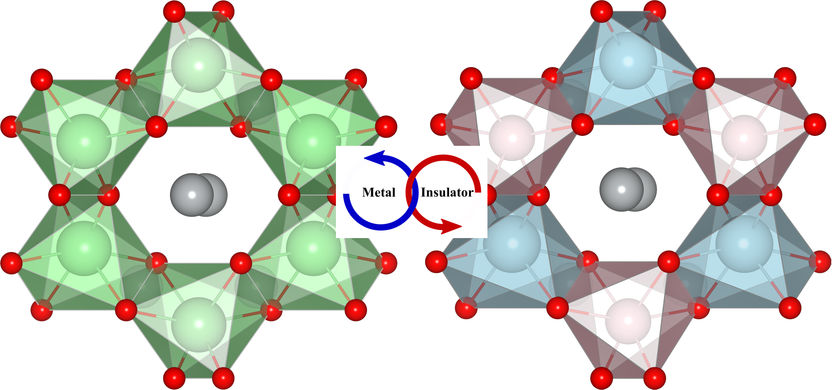Researchers design and patent graphene biosensors
Label-free biosensors are relatively new in biochemical and pharmaceutical laboratories, and have made work much easier. The sensors enable researchers to detect low concentrations of biologically significant molecular substances (RNA, DNA, proteins, including antibodies and antigens, viruses and bacteria) and study their chemical properties. Unlike other biochemical methods, fluorescent or radioactive labels are not needed for these biosensors, which makes it easier to conduct an experiment, and also reduces the likelihood of erroneous data due to the effects that labels have on biochemical reactions.

This is a schematic cross-sectional view of the graphene biosensor chip from US Patent Application No. 2015/0301039 (Oct 2015).
MIPT
The main applications of this technology are in pharmaceutical and scientific research, medical diagnostics, food quality control and the detection of toxins. Label-free biosensors have already proven themselves as a method of obtaining the most reliable data on pharmacokinetics and pharmacodynamics of drugs in pre-clinical studies. The advantages of this method are explained by the fact that the kinetics of the biochemical reactions of the ligand (active substance) with different targets can be observed in real time, which allows researchers to obtain more accurate data about the reaction rates, which was not previously possible. The data obtained gives information about the efficacy of a drug and also its toxicity, if the targets are "healthy" cells or their parts, which the drug, ideally, should not affect.
Most label-free biosensors are based on the use of surface plasmon resonance (SPR) spectroscopy. The "resonance" parameters depend on the surface properties to such an extent that even trace amounts of "foreign" substances can significantly affect them. Biosensors are able to detect a trillionth of a gram of a detectable substance in an area of one square millimetre.
Commercial devices of this type are sold in a format similar to "razor blade" business model, which includes an instrument and highly expensive consumables. The instrument is the biosensor itself, comprising optics, microfluidics and electronics. The consumables for biosensors are sensor chips comprised of a glass substrate, thin gold film and a linking layer for the adsorption of biomolecules. Sensor chips currently use two types of linking layer technology that were developed more than 20 years ago and are based either on a layer of self-assembled thiol molecules, or a layer of hydrogel (usually carboxymethyl dextran). The profit that companies have received from the sale of biosensors and consumables is evenly distributed at a ratio of 50:50.
The authors of the patent, Aleksey Arsenin and Yury Stebunov, are proposing an alternative to existing sensor chips for biosensors based on surface plasmon resonance. Under certain conditions, the use of graphene or graphene oxide as a linking layer between metal film and a biological layer comprised of molecule targets is able to significantly improve the sensitivity of biodetection. The graphene sensor chips were tested on Biacore™ T200 (General Electric Company) and BiOptix 104sa biosensors. In addition to a higher level of sensitivity than similar commercial products, the proposed sensor chips possess the required property of biospecificity and can be used multiple times, which greatly reduces the costs of conducting biochemical studies using the chips.
The use of graphene increases the sensitivity of analyses conducted using SPR spectroscopy more than ten times, which will revolutionize the field of pharmaceutical biodetection. The application of biosensors is currently limited to analysing biological products based on large molecules, whilst more than half of the drugs produced each year have a low molecular weight (no more than a few hundred Daltons). Immobilization of drug targets on the surface of a graphene chip will enable scientists to test the interaction between targets and small molecules. An example of this could be the development of drugs that act on receptors coupled with G-proteins (GPCRs), which are currently the targets for 40% of drugs on the market. Pharmaceutical studies of drugs acting on GPCRs are not currently conducted using SPR due to the insufficient sensitivity of the method. It is therefore expected that the use of graphene biosensors in pharmaceutical studies will help to accelerate the development of drugs and overcome dangerous diseases that cannot be treated with the drugs currently on the pharmaceutical market.
Original publication
Other news from the department science
Most read news
More news from our other portals
See the theme worlds for related content
Topic world Sensor technology
Sensor technology has revolutionized the chemical industry by providing accurate, timely and reliable data across a wide range of processes. From monitoring critical parameters in production lines to early detection of potential malfunctions or hazards, sensors are the silent sentinels that ensure quality, efficiency and safety.

Topic world Sensor technology
Sensor technology has revolutionized the chemical industry by providing accurate, timely and reliable data across a wide range of processes. From monitoring critical parameters in production lines to early detection of potential malfunctions or hazards, sensors are the silent sentinels that ensure quality, efficiency and safety.






























































